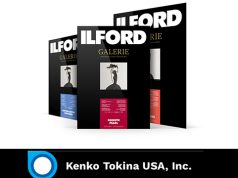
Take it from the perspective of a guy who developed products in both worlds and lived through the transition from film to digital photography—we have a lot of work left to make digital photography relevant for consumers and professionals alike.
Sure a few consumers can do neat stuff today, things we could only dream about back in the days of film. But we still have to overcome the remaining roadblocks in order to realize the true promise of digital imaging.
How did it come to this? Back at the dawn of digital we all gushed at its promise and opportunity. We were going to deliver some really fundamental improvements—things like instant viewing, the elimination of the costs of film and processing. And we would provide everyday consumers with access to what seemed like an endless array of new and really innovative photo products. We dreamed of a day when everyone would always have a camera handy to capture the truly important moments in their lives.
But like most midlife crises, today we might wonder what we actually wished for back then. Consumers remain in love with photography and are taking far more pictures today than ever before. While estimates vary widely, most approach a trillion images captured last year. But taking pictures and having pictures are actually two different things.
If you don’t want to listen to the musings of a longtime photo guy, then listen to Vint Cerf, Google vice president and a pioneer in the development of today’s connected digital world. “If we don’t find a solution, our 21st century will be an information black hole,” Cerf warns. “Future generations will wonder about us, but they will have very great difficulty knowing about us.”
As an industry, we often toss about high-minded technical concepts for “open” and “interoperable” systems. Imaging consumers desperately need simple, open-ended, “future proof” solutions. Normally this is easy stuff, but it’s just that sometimes, in the heat of the moment when trying to build something really new and innovative, we forget what being a real mass-market consumer is about. Personal images are irreplaceable, high-value content that need to remain safe and accessible for decades and even centuries to come.
What we need here isn’t rocket science, especially when compared to the technologies that have been developed and commercialized in the past decade. It’s just open communication and cooperation between digital imaging industry sectors. Of late, our problem is that historical photo industry stewards like Fujifilm and Kodak have been forced to retrench or have simply abandoned their leadership roles. In days past, at Kodak and Fujifilm we literally perseverated on every last detail of how a photographic product would work in the hands of a consumer. Everything had to be simple, straightforward, easily explained and quickly understood by the average user.
But the news is not all bad. There are some significant initiatives coming from some of today’s digital imaging stakeholders. As an example, why do we continue to force consumers to capture and store camera files in proprietary “RAW” formats that can easily become obsolete and unreadable when Adobe offers (and fully supports) an open DNG image file format, in both lossless and lossy flavors?
Textual image annotation is critical to curation and long-term discovery and access. Why are consumers still being encouraged to annotate and curate their images by relying on proprietary image databases and captioning schemes when IPTC and its successor, XMP, are both open and readily available to accept and retain all of this key, non-image information? Sure “future proof” is a tall order, but IPTC captions and keywords that were written to image files more than 25 years ago are still readable and will remain accessible to future image database and access schemes.
Make no mistake, I am not advocating convening huge standards bodies. We already have plenty of existing standards to get us where we need to go. What we really need are more arbitrary conventions—not unlike our tacit understanding to drive on the right-hand side of the road. We all get where we need to go, it all works, and nobody is inconvenienced!
George Eastman’s mantra of “you push the button and we do the rest” today has become “you push the button and then you figure out the rest.”
In short, our industry has made it way too easy for a consumer to do exactly the wrong thing! Together we can easily solve these problems and participate in a vibrant and relevant market for consumer digital imaging for decades yet to come.
During his 23 years at Kodak, Scott Brownstein was responsible for such advanced products as dye-sublimation printing, Create-a-Print consumer-operated kiosks and Kodak’s PhotoCD system. In 1993, he founded AGT e-Systems and was the driving force behind its Digital Link image capture and archiving solutions for newspaper and magazine editorial departments. He later founded Fujifilm e-Systems, where he developed digital solutions for professional and retail markets. He was also the creative force behind one-hour, web-to-retail printing at 1,000+ camera stores and 3,500 mass merchandiser locations. Brownstein was the founding president of DIMA and served on PMA’s board of trustees. Now a consultant, he received a 2015 PMA Distinguished Service Award.





